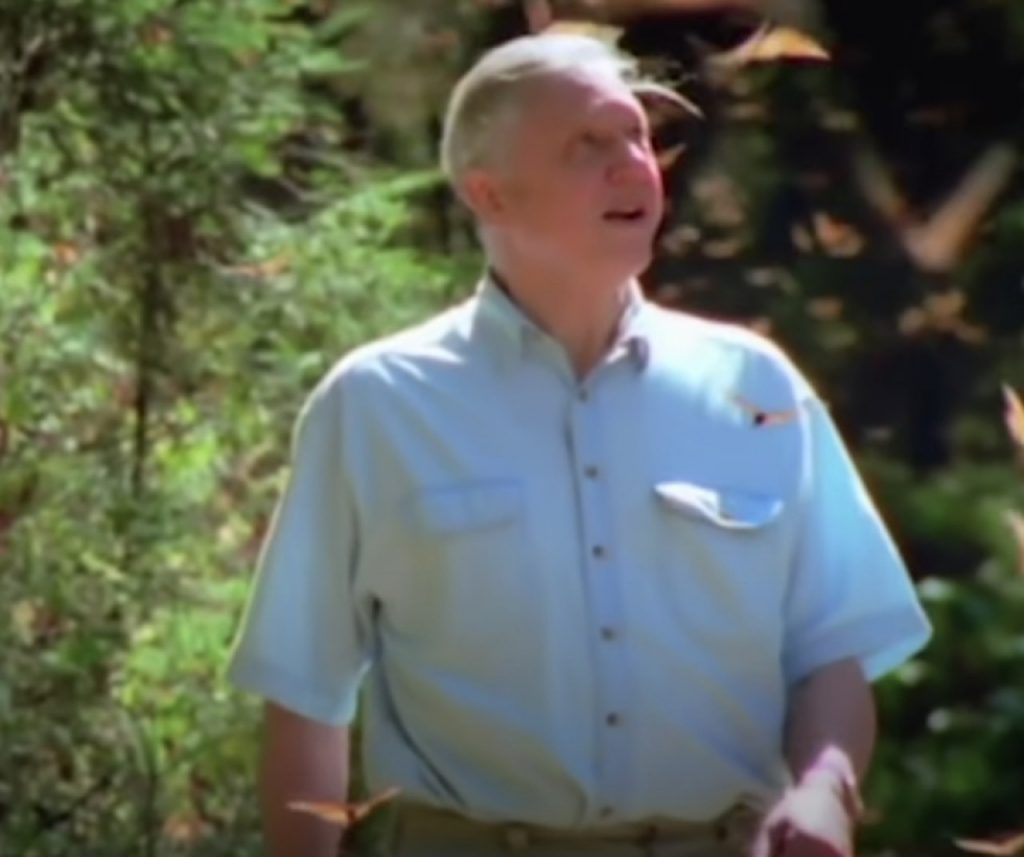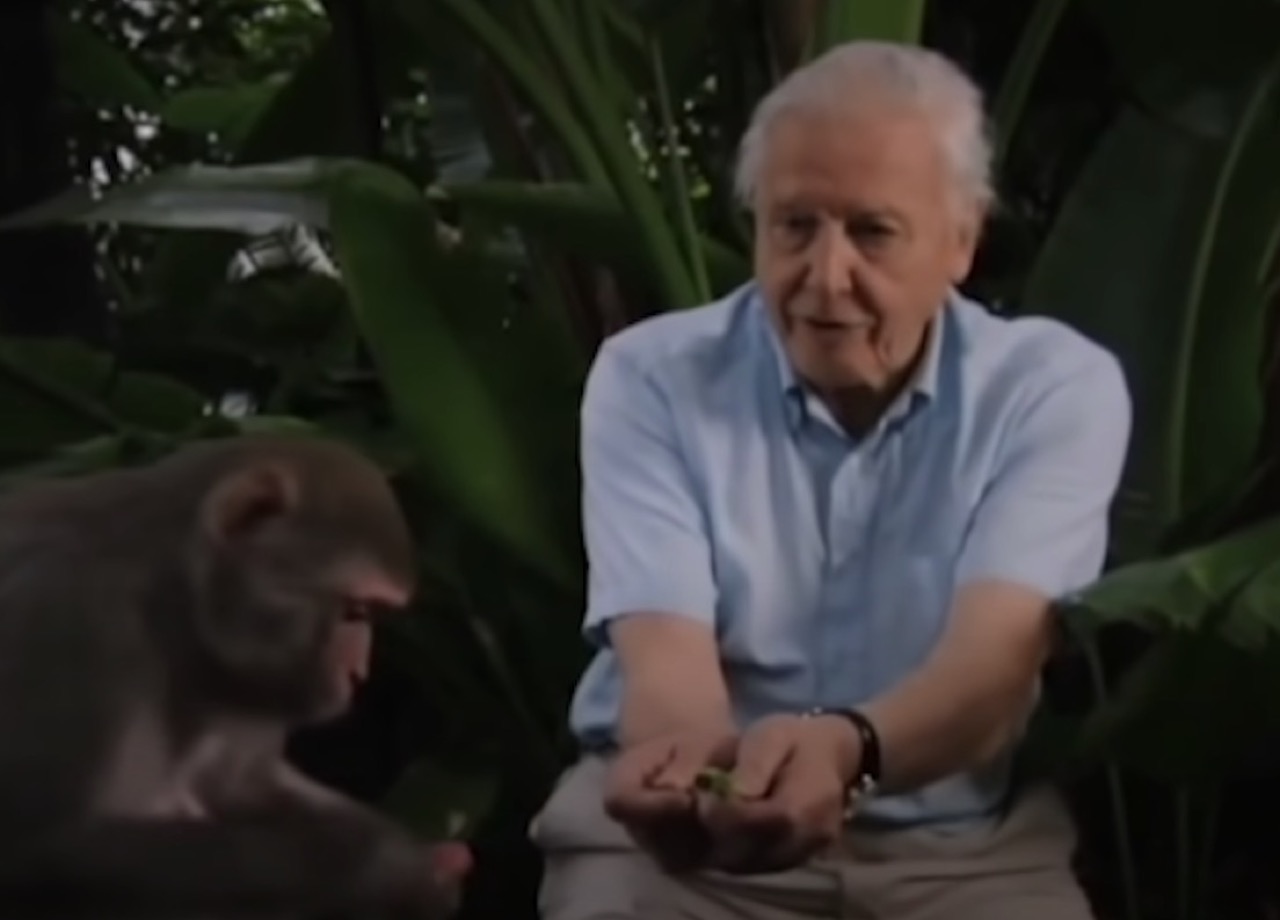David Attenborough is a British broadcaster, natural historian, television producer, and environmentalist. Attenborough is renowned for his unique voice, which sounds in a hushed, reverential whisper that cannot be imitated. He is one of the iconic television presenters of all time.
David Attenborough has a net worth of $35 million. His wealth comes from years of accumulated appearance on T.V., innovative documentaries, and live broadcasts.
The question on everyone in the television, naturalistic broadcasting is – Can David Attenborough be replaced, or who will step into the shoes of legendary David Attenborough as he gets older and draws the final curtain on his illustrious career? Unfortunately, the answer seems to be none. This article summarizes David Attenborough’s Life, wife, net worth, and achievements on BBC two.
Walk Through the Article
Early Life
Sir David Attenborough was born David Frederick Attenborough on May 8, 1926. He was born in Isle worth, Middlesex as the second child of Frederick Attenborough. Attenborough has two successful older and younger brothers. His father, – Frederick Attenborough, is a university principal and writer, while his mother was Mary Clegg. Attenborough grew up at the University College, Leicester making them exposed to academic and educational facilities. Attenborough’s other brother had a successful career in their different fields, but he is the only one who had outlived all. His older brother Richard was a famous and award-winning British actor, filmmaker, and director who died at 90. Their youngest brother John Attenborough was a financial advisor and top English executive at an Italian car manufacturer. One unique thing about the three brothers was their belief in the institution of marriage. The three of them kept faith with their wives until death. Richard and John are survived by their wives, while David had remained unmarried since his wife’s death in 1997.
Attenborough developed an interest in nature and preserving nature at the tender age of seven. He collected stones, bird eggs, fossils, and other natural specimens, forming them into a mini-museum. Funny right? That is how it appears to be, but that turns out to be what modeled and championed Attenborough’s career today. In the company of elder brother Richard, they attended a lecture by Grey Owl in 1936, which widened his view on the conservation of natural sciences. Attenborough attended Wyggeston Grammar Boys School in Leicester, where he won a scholarship to study natural sciences (Geology and Zoology) at Clare College, Cambridge. Upon completing his degree, in 1947, he was called up for national service in the Royal Navy. Unfortunately, his high hope of exploring the world was dashed when he was posted to ship in North Wales.
Two years later, Attenborough returned to London and started working as an editor for an educational publishing firm. The following year Attenborough married Jane Elizabeth Ebsworth Oriel. He also began a training program with the BBC following an offer made to him by Mary Adams, who got attracted by his CV. In 1952, Attenborough completed his training program and joined BBC as a producer and not as a presenter because he was camera shy. This step would be considered the first step in the journey of a thousand miles which today has become history both on BBC and beyond.

Broadcasting First Step
David Attenborough’s boss was skeptical about the audience’s reception of Attenborough’s big teeth as a presenter, confining him to producing roles. However, he started with baby steps of appearing as co-host with naturalist presenter Julian Huxley in the three-part series Animal Patterns where animals from the London Zoo are brought to the studio for the film. Attenborough felt that the animals were discomforted and distressed. So he came up with a program alongside Jack Lester, which involves filming animals in their comfort zones or the wild. So in 1954, Attenborough launched Zoo Quest, but Lester fell ill, forcing Attenborough to become the presenter. With its on-location filming yet at a respectful distance presenting wildlife to the audience, Zoo Quest established a realistic and exciting approach to filming animals and becoming a general standard for nature documentaries. The show was a success, making BBC establish its Natural History Unit in 1957.
In the early 1960s, Attenborough resigned from the BBC despite the success of his show to pursue postgraduate studies at the London School of Economics to study Social Anthropology while filming other minor projects and documentaries. Midway into his studies, BBC Two was created, and he accepted the invitation to become BBC Two controller. He became in charge of BBC’s transition from black and white to color television. He introduced some amazing shows into the weekly schedules through his innovative skills, including sports, business, and natural history. Some of such programs are Call My Bluff, Monty Python’s Flying Circus, Match of The Day & The Money Programme, The Scent of Man. He was promoted to the director of programs and 1970, and the British Academy honored him with its Desmond Davies Award. For fear of not being allowed to fulfill his youth dreams at the BBC, he resigned from BBC Two to follow his dreams into the wild.
Upon leaving BBC Two, Attenborough started working as a freelancer, writing and producing a string of programs such as Eastwards with Attenborough, which was tailored to the pattern of Zoo Quest (1973), The Tribal Eye (1975), which focuses on tribal art and The Explorers in the same year. Attenborough’s notable success came with his 95 – episode examination of the role of evolution in nature in 1976, known as Life on Earth. The program marked a remarkable change in wildlife documentary filming, demanding much on the cameramen and the rest of his crews. Attenborough took his crews round the world, bringing wildlife in the most realistic ways to different homes. The program garnered an estimated viewing audience of more than 500 million. The success of Life on Earth immortalized Attenborough as a household name. Then it became easy for him to produce many offshoots of the Life series which The Trials of Life (1990), which focused on animal development and behavior, Life in the Freezer (1993) which presented a survey of Life in Antarctica, The Private Life of Plant (1995) which used time-lapsed photography to reveal the dynamic and growth of plants, The Life of Birds which looked at the behavior nature of birds. This series gave him his second Peabody Award after earning one from The Private Life of Plant.
Through the advancement in camera technology in 2002, Attenborough using low-light and infrared cameras, produced The Life of Mammals to reveal the behavior of nocturnal mammals. The success in the usage of advanced camera technology led to Life in the Undergrowth in 2005, which revealed the world of invertebrates. In 2008, he completed the Life trilogy in Life in Cold Blood, which examined the world of reptiles. The same year he compiled the Life Series in a DVD encyclopedia called Life on Land. The Life series was the only documentary that can be accredited to Attenborough, and he narrated about 253 episodes of BBC One. Wildlife on One from 1977 and 2005. Attenborough partnered with Sky 3D to produce the Flying Monster 3D, a film that debuted on Christmas Day of 2010, followed by The Bachelor King 3D, Conquest of the Skies, aired on Sky 3D in 2014.
Attenborough and His Achievements
Attenborough was knighted in 1985 and 2002, and he received the Order of Merit from Queen Elizabeth II. He has received several honoring degrees from top British Universities for his contribution to knowledge. Also, many species and genera, both living and extinct, have been named after Attenborough. Attenborough has authored many books such as Amazing Rare Things (2007), The Life of Birds (1998), The Private Life of Plants (1994), The Living Planet (1984), Adventures of a Young Naturalist (1980), A Life on Our Planet (2020) and many others.
Attenborough Family and Wife
Attenborough married Jane Elizabeth Ebsworth Oriel in 1950. They are blessed with two children, Robert and Susan. The two children followed the path of their paternal grandfather and became academic; Robert is a senior lecturer at the Australian National University in Canberra, a lecturer in Bioanthropology, while Susan is a former primary school headmistress. Unfortunately, their mother died in 1997 from a brain hemorrhage.
Attenborough Net Worth
David Attenborough has a net worth of $35 million. His wealth comes from years of accumulated appearance on T.V., innovative documentaries, and live broadcasts.
David Attenborough’s Quotes
David Attenborough’s quotes are usually about environment and how to protect nature and rediscover more species.
- Everyone likes birds. What wild creature is more accessible to our eyes and ears, as close to us and everyone in the world, as universal as a bird?
- I just wish the world was twice as big and half of it was still unexplored.
- The question is, are we happy to suppose that our grandchildren may never be able to see an elephant except in a picture book?
- There is no question that climate change is happening; the only arguable point is what part humans are playing in it.
- I don’t run a car, have never run a car. I could say that this is because I have this extremely tender environmentalist conscience, but the fact is I hate driving.
See Daniel Craig Net worth





